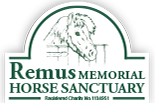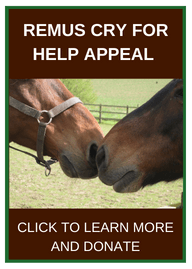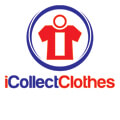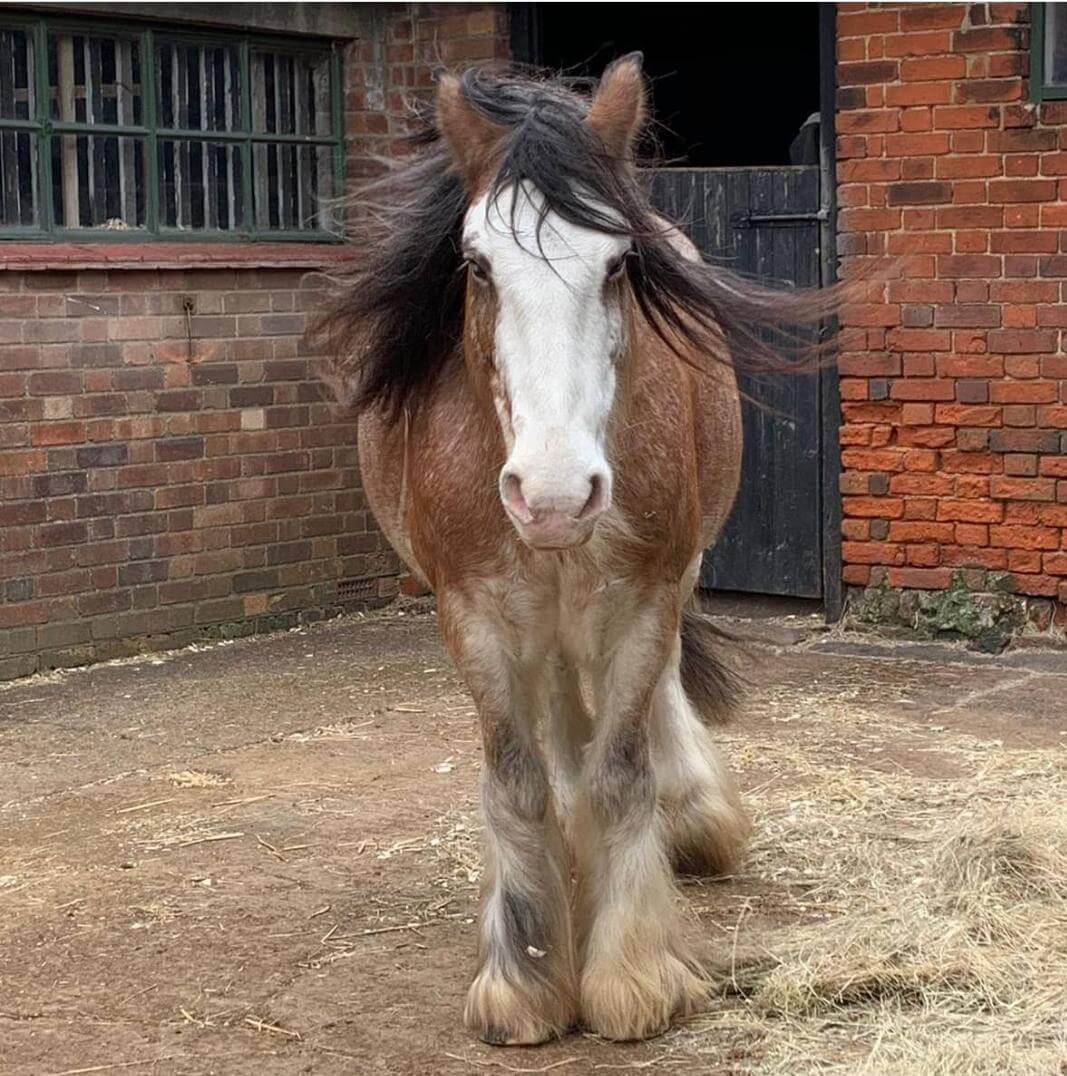
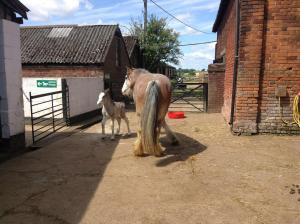

The True Cost of Horse Ownership
Keeping a horse is not a cheap hobby – and with the cost of living crisis, the expense of horse ownership has never been more keenly discussed.
At Remus we sadly often see the results when owners cannot afford to keep horses properly – whether they come to us because corners have been cut in their health and welfare, or whether owners are looking to rehome because they can no longer afford to keep their horses amid rising bills or a change in personal circumstances.
That’s why we make it part of our mission to educate would-be owners on the true costs of the hobby. Along with the actual purchase cost of your animal, there are insurance premiums to be paid, vets bills, feed, hay and livery if you don’t have your own place to keep your horse. That’s before you add in the cost of tack and other kit, transport and lessons.
The excellent Horse and Hound feature at www.horseandhound.co.uk/features/10-ways-save-money-livery-bill-431963 lists some ways to help keep costs down, including sharing costs with other owners, selling unwanted tack, taking on jobs at the livery yard, and sharing rarely needed kit and transport costs.
It’s important to note that none of these ideas sacrifice the quality of care and welfare for your animal – a concern that should always be uppermost in owners’ minds.
If you are paying for livery, although cost will be a major consideration, you should also ensure that corners are not being cut to get that good deal. Find out more about the true cost of livery at www.horseandhound.co.uk/news/why-owners-and-livery-yards-must-appreciate-the-true-cost-of-keeping-horses.
This year Remus is celebrating its 40th anniversary. If you’ve not yet done so, please take a look at our 40th Anniversary Challenge and share with your friends and family to help us achieve our mission.
Prevention is Better than Cure: Atypical Myopathy
All horse owners know the risk of ragwort in their fields – and despite it being a back-breaking job, you’ll see them out in the fields pulling the weed to protect their animals. It’s a job the staff at Remus Horse Sanctuary know well! But there’s another danger out there – the Sycamore tree.
Seeds and seedlings from the tree contain a toxin that can cause a potentially fatal disease called atypical myopathy. Most prevalent in spring and autumn, prevention is most definitely better than cure in this case.
Horses that have eaten seeds to seedlings might show signs such as lethargy, depression, muscle tremors, sweating, a reluctance to move, and red/brown urine. Should you see these signs, it is important to get immediate veterinary assistance – the first 24-48 hours will be the most critical time.
How can you lower the risk of atypical myopathy? If there are sycamore trees nearby, fence them off from your horse, or move your animal to another area at high-risk times. You can also offer more forage so the animal isn’t tempted to eat anything that poses a danger – and clear up any areas of seeds and uproot seedlings.
For more about prevention, symptoms and treatment head to www.yourhorse.co.uk/horse-care/vet-advice/beware-sycamores-deadly-seeds.
You can view our information on horse welfare.
Stripes Could be Key to Combating Horse Flies
The latest research from scientists suggests that the pattern on your horse’s rug could be a vital weapon in your battle against bugs…
Scientists from the University of Bristol have expanded on previous research that found that horse flies avoid landing on stripes.
The study, published in the Journal of Experimental Biology, used horses wearing different patterned rugs to compare results.
The research found that high contrast patterns – such as black and white – were particularly effective in thwarting fly attacks. The theory is that the flies find large patches of dark colours appealing.
So next time you buy a rug, look for one with a high contrasting pattern – in stripes or a small checkerboard patterns – for increased protection for your horse. It’s something we will definitely be trying out on our residents at Remus Horse Sanctuary!
Find out more at www.horseandhound.co.uk/news/zebra-stripes-horse-flies-research
Have a Healthy Spring with Dengie
Whilst the onset of spring brings joy to many horse, pony and donkey owners, for those of laminitis-prone individuals it can be a stressful time deciding whether it is safe to turn out on spring grass and what to feed if you don’t.
Why does spring grass = laminitis risk?
- More grass to eat – As the daytime temperatures gradually increase, grass growth begins in earnest. Fundamentally this means there is more grass to eat which can result in rapid weight gain and consumption of larger amounts of non-structural carbohydrate (NSC). Both factors are linked to an increased risk of laminitis in susceptible individuals such as those with Equine Metabolic Syndrome (EMS).
- A higher level of NSC in grass – Levels of NSC, an analytical term to describe the sum of simple sugars, fructan and starch, start to increase when the sun is shining. If it is too cold for grass to grow, levels of NSC are driven up. During the spring where there are times of high light intensity, but low temperatures persist it is advised that susceptible individuals are prevented from grazing (Longland and Byrd 2006). Consumption of larger amounts of NSC is a problem for those with underlying insulin dysregulation such as those with EMS, as it results in a higher insulin response and therefore increased laminitis risk.
Feeding for a Healthy Spring
For horses and ponies with EMS and underlying insulin dysregulation that are very susceptible to laminitis, complete removal from grass may be the safest way to keep them healthy in spring. This increases reliance on conserved forages but gives greater control over what and how much they are consuming. The aim is to maximize chew time and maintain interest whilst not eating grass.
Dengie Healthy Hooves Molasses Free is a nutritionally complete fibre feed combining chopped and pelleted alfalfa and straw with a light rapeseed oil coating, added vitamins and minerals, garlic, and MSM. Dengie Healthy Hooves Molasses Free is a great addition to the ration of the laminitis-prone individual as:
- It is a low-calorie fibre feed at 8.5MJ/kg which is ideal for those watching their waistline
- It is very low in sugar and starch at 2.5% and 1.5% respectively making it very suitable for those prone to laminitis – it is approved by the Laminitis Trust
- Healthy Hooves Molasses Free combines chopped and pelleted fibres for added interest and to encourage foraging activity
- When fed at the recommended quantity of 500g per 100kg of bodyweight no additional vitamin and mineral supplement is required as Healthy Hooves Molasses Free is a nutritionally balanced fibre feed. Healthy Hooves Molasses Free also contains a full range of B vitamins including biotin at the level you would typically find in a hoof supplement
- Healthy Hooves Molasse Free contains added MSM for healthier joints and stronger hooves. Grass is the horse’s natural source of sulphur and horses on restricted grazing may therefore miss out. MSM is a source of bio-available sulphur which is found in high concentrations in connective and structural tissues such as collagen and keratin in the horse’s joints, skin, coat and hooves
For friendly feeding advice contact the Dengie Feedline on 01621 841188 or visit www.dengie.com.
Spring has sprung: how have your horses done?
The daffodils are out and the sun is making more appearances – yes, spring is well and truly on its way!
It’s been a long, hard winter for everyone, but how are your horses doing? From a welfare point of view there are a few things we need to be on top of as we head into spring. The main one is weight. Horses are designed to lose some weight over winter in preparation for the lush spring grass.
If your horse is a good doer, winter is an ideal opportunity for him to lose some pounds. The dreaded laminitis is a real threat at this time of year so, if he hasn’t lost a little, consider slowly introducing more exercise and decreasing his hard feed. If your horse is retired or not ridden, like our residents here at Remus, then some walking in hand could be beneficial. For more information about laminitis, you can also read our previous blog on the subject here: Laminitis Alert for Horse Owners and/or download this article from Horse Magazine which featured our research work.
If your horse has lost too much weight over winter then good nutrition and appropriate rugging until the weather warms up will help. The spring grass will also give him some much needed nutrients, but if you’re at all worried then speak to your vet.
Check out the full vet health check from Your Horse magazine for more information: www.yourhorse.co.uk/advice/vet-advice/articles/vet-health-check-has-your-horse-wintered-well
And if you would like to contribute to our winter feed appeal to help the many neglected, malnourished and tethered horses out there, you can find out more and do so here.
Caring for our horses during the pandemic
Coronavirus has changed our lives beyond anything we thought possible. Thankfully our animals, for the most part, remain oblivious to everything going on around them. That’s how we want it to be, but for many who own or care for horses, routines have been affected and even life at the yard has been unable to go on as usual.
Depending on your yard situation, you may have had to turn your horses away for the foreseeable future, or you may be able to continue with their usual routine but on a buddy system with other liveries. Either way, this time of year presents lots of challenges with weight and grass management, which have now been made even trickier. Plus, as we all know, horses thrive on routine and some have had to endure sudden but inevitable changes.
So there is a lot to think about regarding our four legged friends – from managing farrier visits to coping with reduced exercise to getting hold of essential supplies. Among the reams of information out there, this checklist from Horse & Rider is a good place to start and will help make sure you’re on top of everything that still needs doing despite Covid-19.
Here at Remus we are now reliant on a small but dedicated group of yard staff and continue to give our residents the very best day to day care amidst more and more challenging circumstances. In the meantime we’re enjoying sharing pictures of the horses and ponies with you on our social media pages and if you are able to help support us in any way possible, you’ll find links below:
- Please make a donation, even if its only to set up a monthly direct debit for £5 a month! remussanctuary.org/donate.
- If you prefer you can donate food and bedding via our online shop www.remussanctuary.org/product-category/animal-treats.
- Please share our posts on social media with your friends and family www.facebook.com/RemusHorseSanctuary, twitter.com/RemusHorse, www.instagram.com/remushorsesanctuary.
We and the animals thank you!
Stay alert this Spring
It’s March, which means the first day of Spring is nearly upon us! It’s a lovely time for horse owners with lighter evenings and less mud, but it’s also a time to be vigilant. Yes, there’s the dreaded laminitis we all worry about, but the start of Spring is also when people tend to start getting their gardens ready for the warmer weather.
There was a news story in Horse & Hound recently about grass cuttings being dumped in a field with horses. Cut grass can do a lot of damage to a horse; it can make them colic, which could lead to all sorts of complications. Members of the public don’t necessarily realise how grass cuttings, vegetables or anything else they assume horses can eat, can actually harm them.
Our Horse Welfare Watch here at Remus helps us to encourage people not to turn a blind eye and report any horses that they are concerned about. Horses can, unfortunately, be exposed to what is not good for them, but we can work together to help raise awareness of the dangers and stay alert.
Read the whole news article here.
For information on our Horse Welfare Watch, visit our website here.
